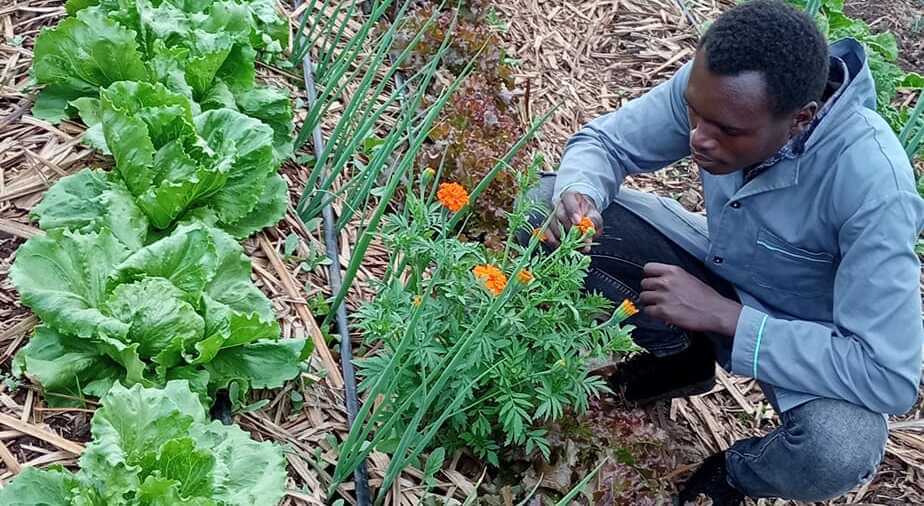Organic farmers in Kenya have turned to the neem tree as a cure-all thanks to its powers as a pesticide, fungicide, and nematicide.
Daniel Kamau, an organic farmer in Muranga, has been using neem for three years and reported that he’s managed to control and clear early blight and tuta absoluta in tomatoes, scales, and mealybugs in citrus fruits, cutworms in asparagus as well as combat nematodes.
He also uses neem as a source of fertiliser, foliar feed, and for earthworm multiplication.
Rightly named Mwarubaini– the tree of forty cures– many Kenyans will recall a childhood of having to use neem for multiple ailments, skin issues, and as a mosquito repellant.
For Daniel, neem’s ability to ‘cure everything’ rings true in agriculture as well thanks to the answers it has provided for what he describes as the ‘big elephants’ in chemical-free farming.
“When I set out my plan to get into organic farming in 2021, a senior agronomist at a flower farm advised me to start growing neem trees or find a supplier of neem cake. At the time, they were shipping most of their neem products from India,” Daniel said.
Neem cake is the leftover of removing neem oil from the tree’s seeds.
He buys at least 70 kilograms of the cake every three months from Malindi for Sh100 a kilogram for use on his half-acre farm. This is dissolved in a mixture of water and organic fertiliser before it is applied to crops.
He conducts a routine weekly preventative spray and applies it on infected plants every three days until the symptoms of the disease are gone. Depending on the severity of the attack, he dissolves a kilogram to three kilograms of neem cake in 20 liters of water.

While most Kenyan neem traders sell neem seedlings for Sh20 each, bulk neem seed orders can be made through the Kwetu Training Centre in Mtwapa with a kilogram of neem seeds costing Sh30 to 60.
Neem seeds will only germinate if they are less than three months old. The seeds are placed on a newspaper placed on plastic under the shade and sprinkled with water daily for a week. The newspaper has to be renewed every second day. After a week the seed will crack and sprout ready to be planted in compost made of half soil and half cow manure.
A small twig can also grow neem by stripping it of its leaves and sticking it into moist soil.
Neem is hardy and thrives even in arid and semi-arid areas. It can survive in temperatures as high as 50°C.
It should be noted that the tree is highly invasive and competes with crops and other trees for nutrients. While its deep tap root and many extending lateral roots enable it to do well even during drought, its large size and affinity for moist areas make it difficult to control.
Neem trees start producing fruits after three to five years and are fully productive in 10 years. Under ideal conditions in Kenya, they give up to 30kg of seed yearly and 350kg of leaves.
Daniel Kamau: 0714819418
KWETU: 0724 926756
Photo Courtesy: Good Nature Organic Lawn Care
Read more:
Coastal Farmers Find Empowerment Growing Neem Trees
Nakuru Farmers Reduce Pests 40% With Neem Leaves
Neem demand triples, but Kenya slow to expand as India and China seize chances
